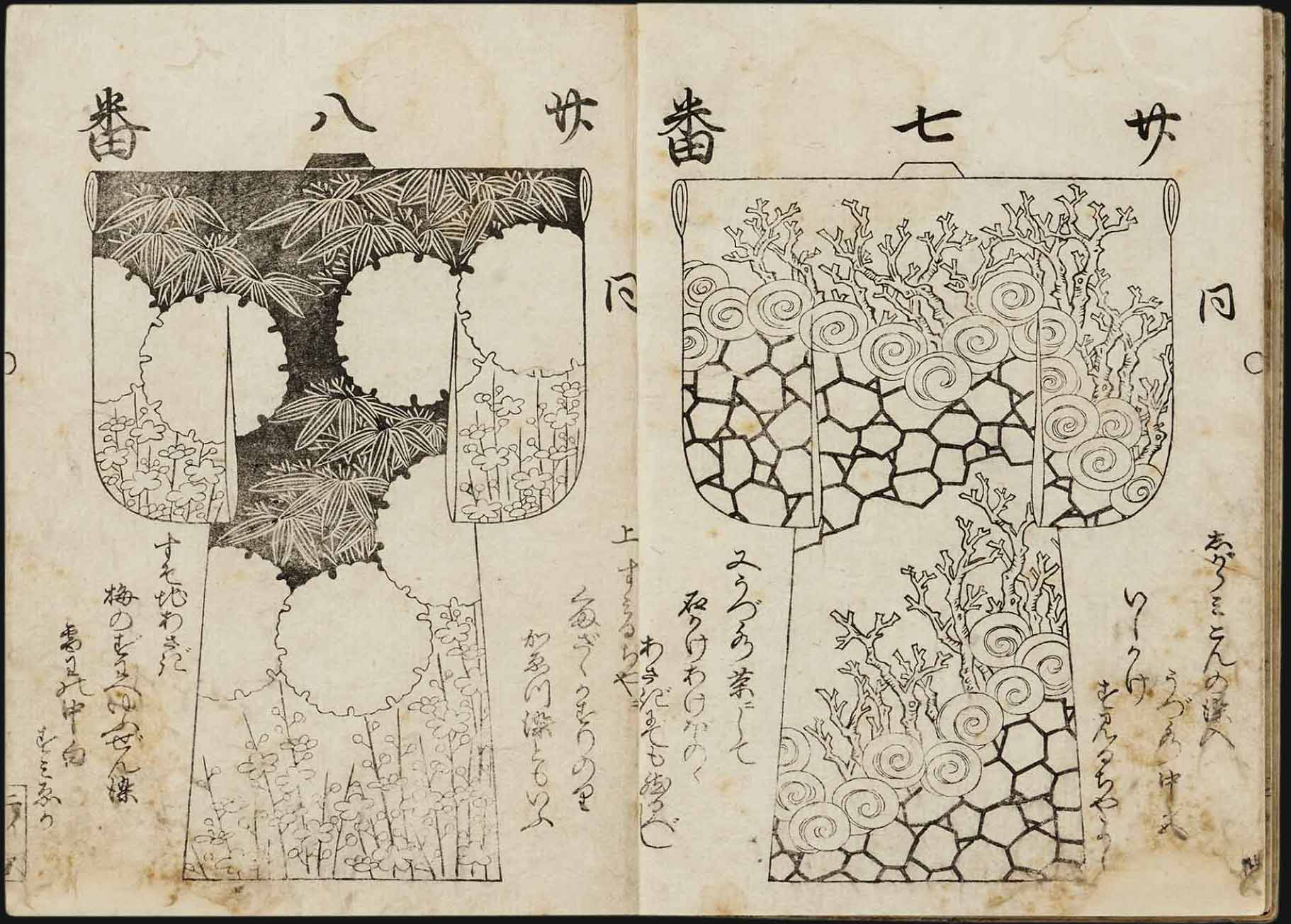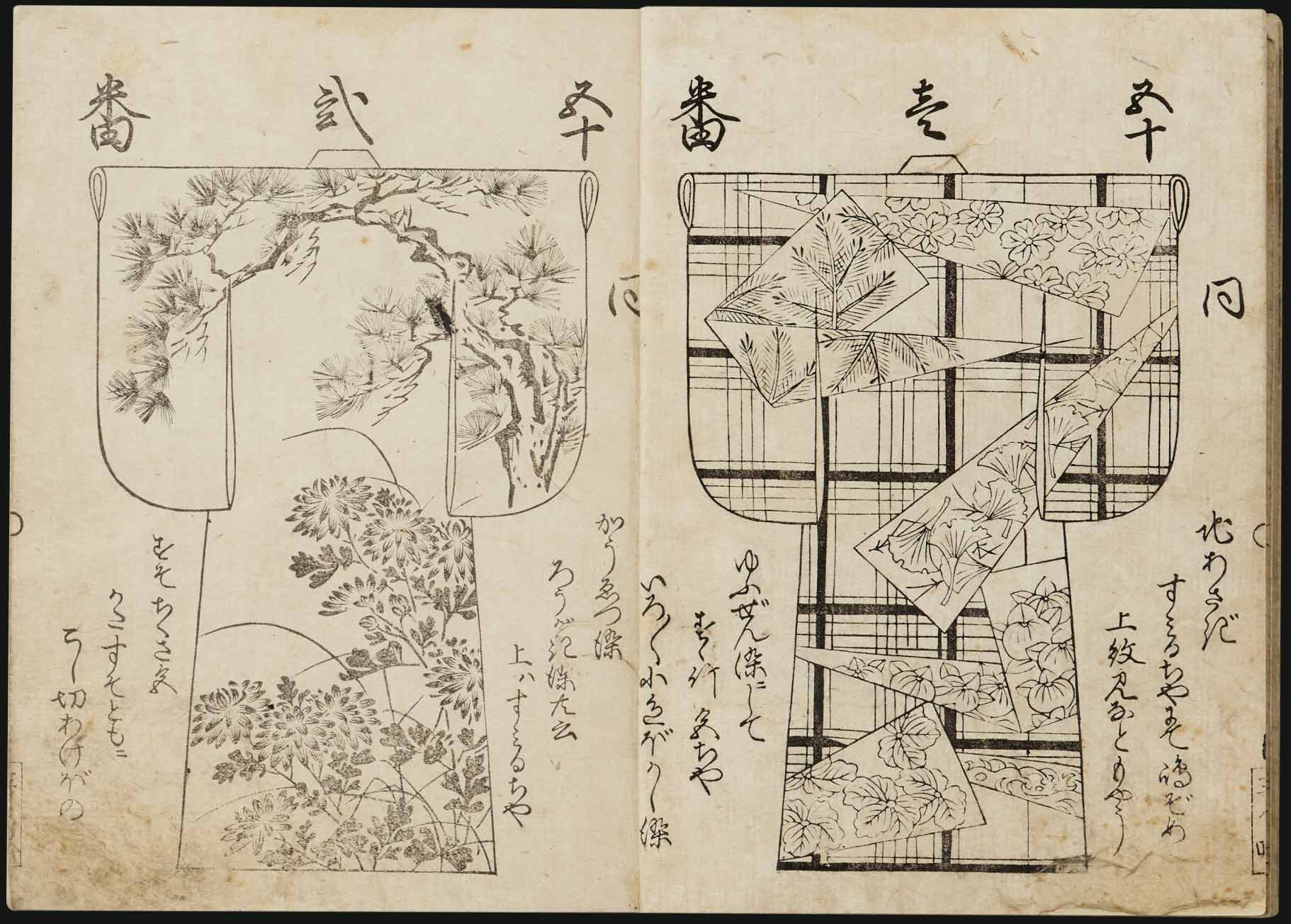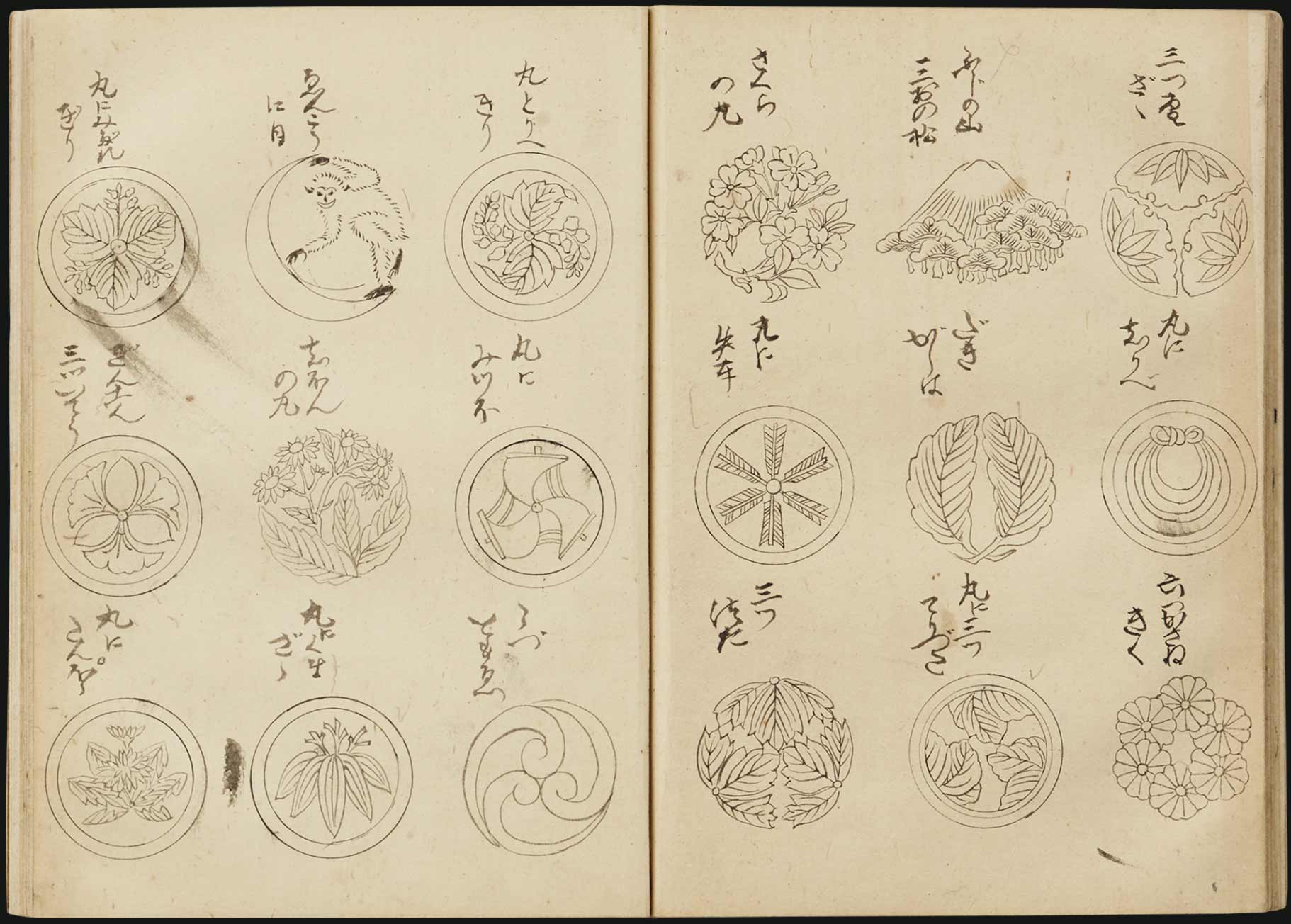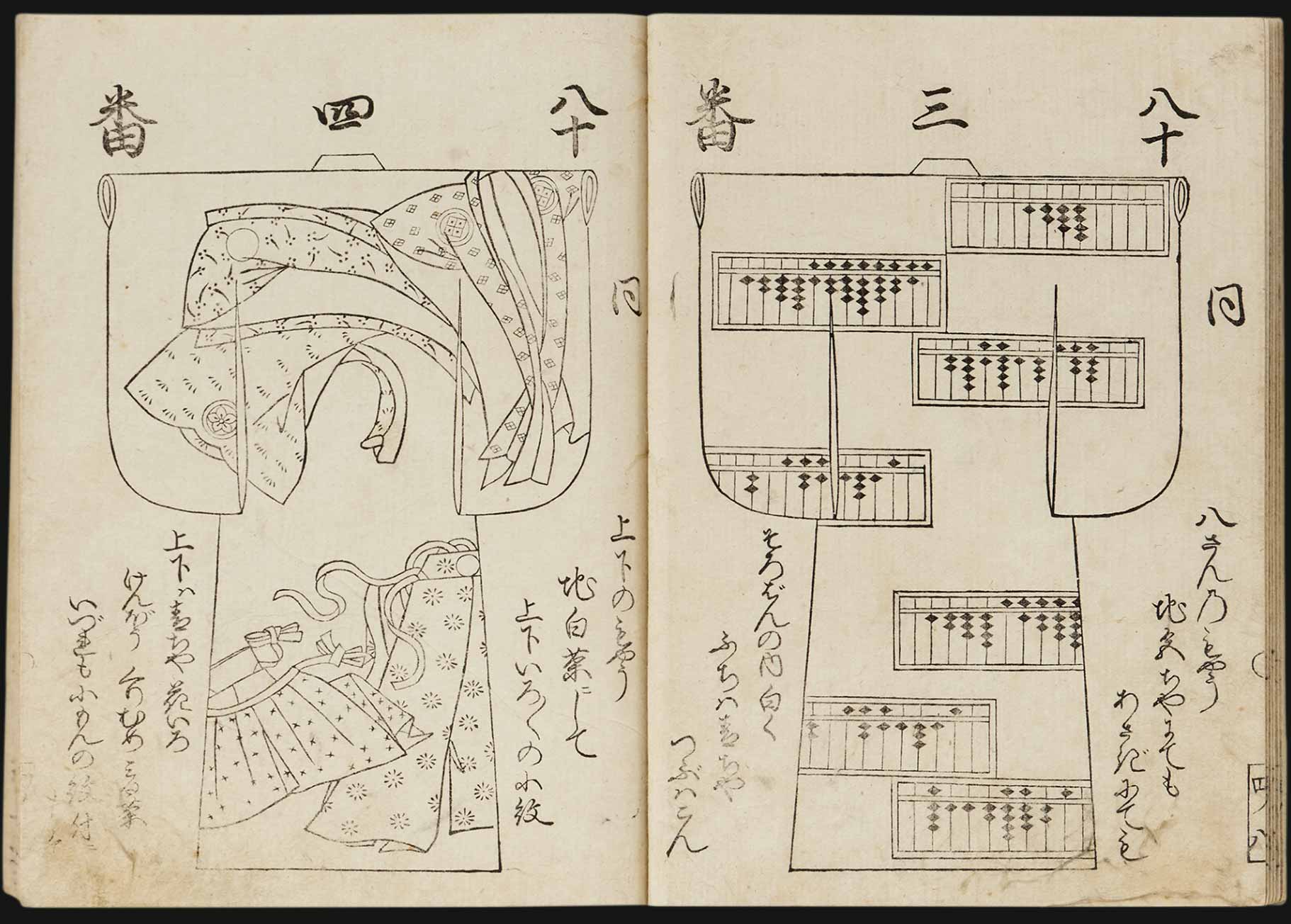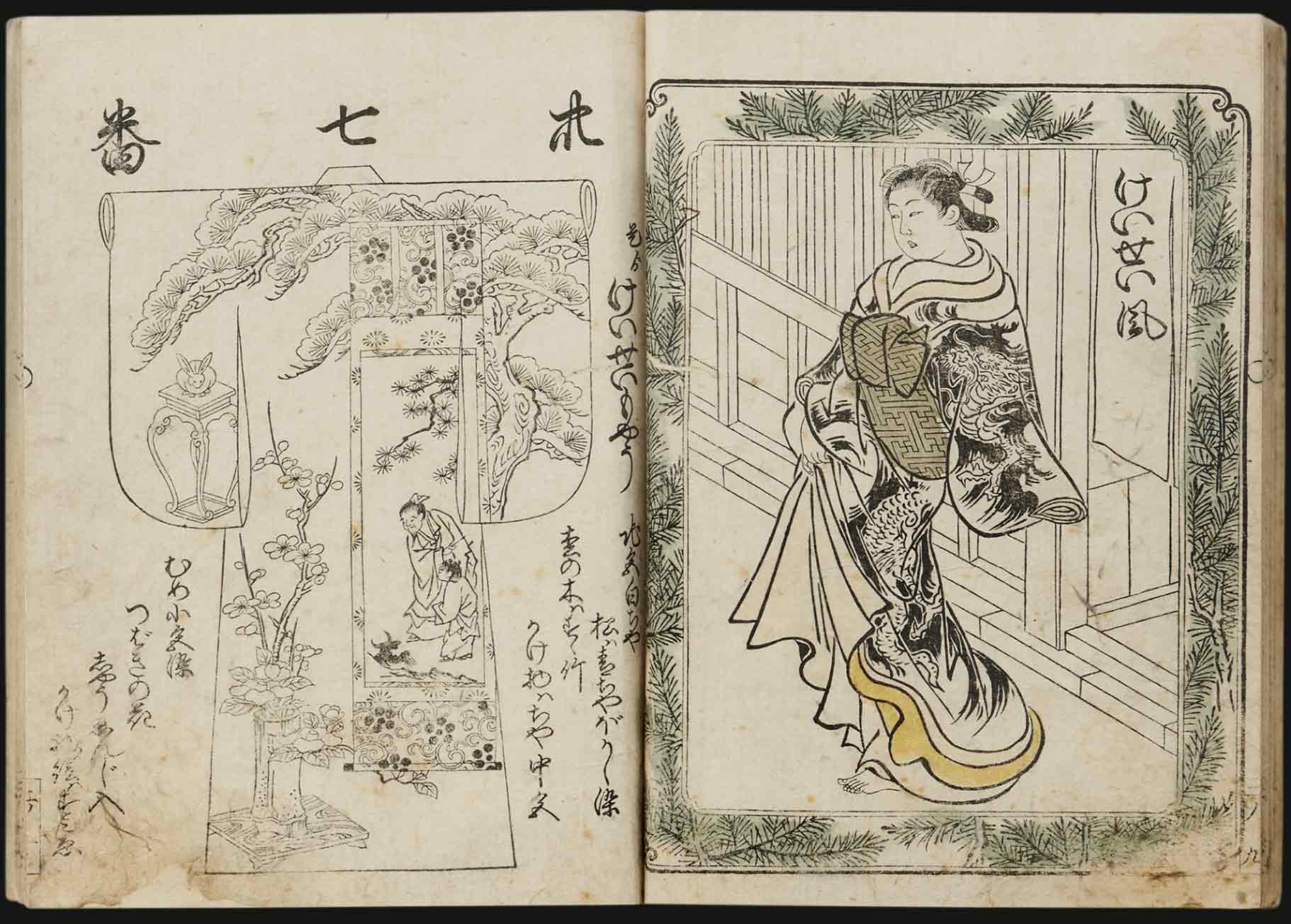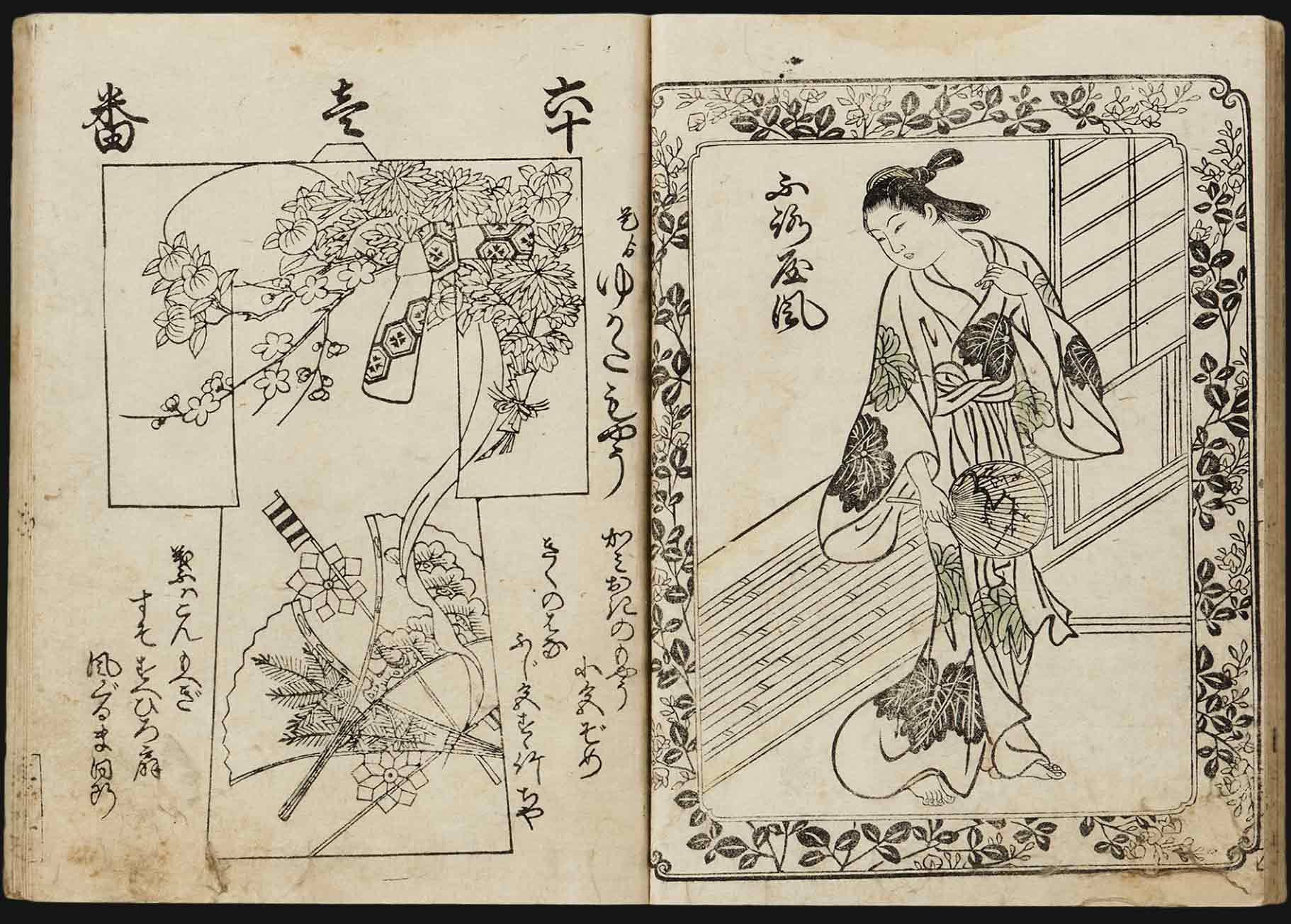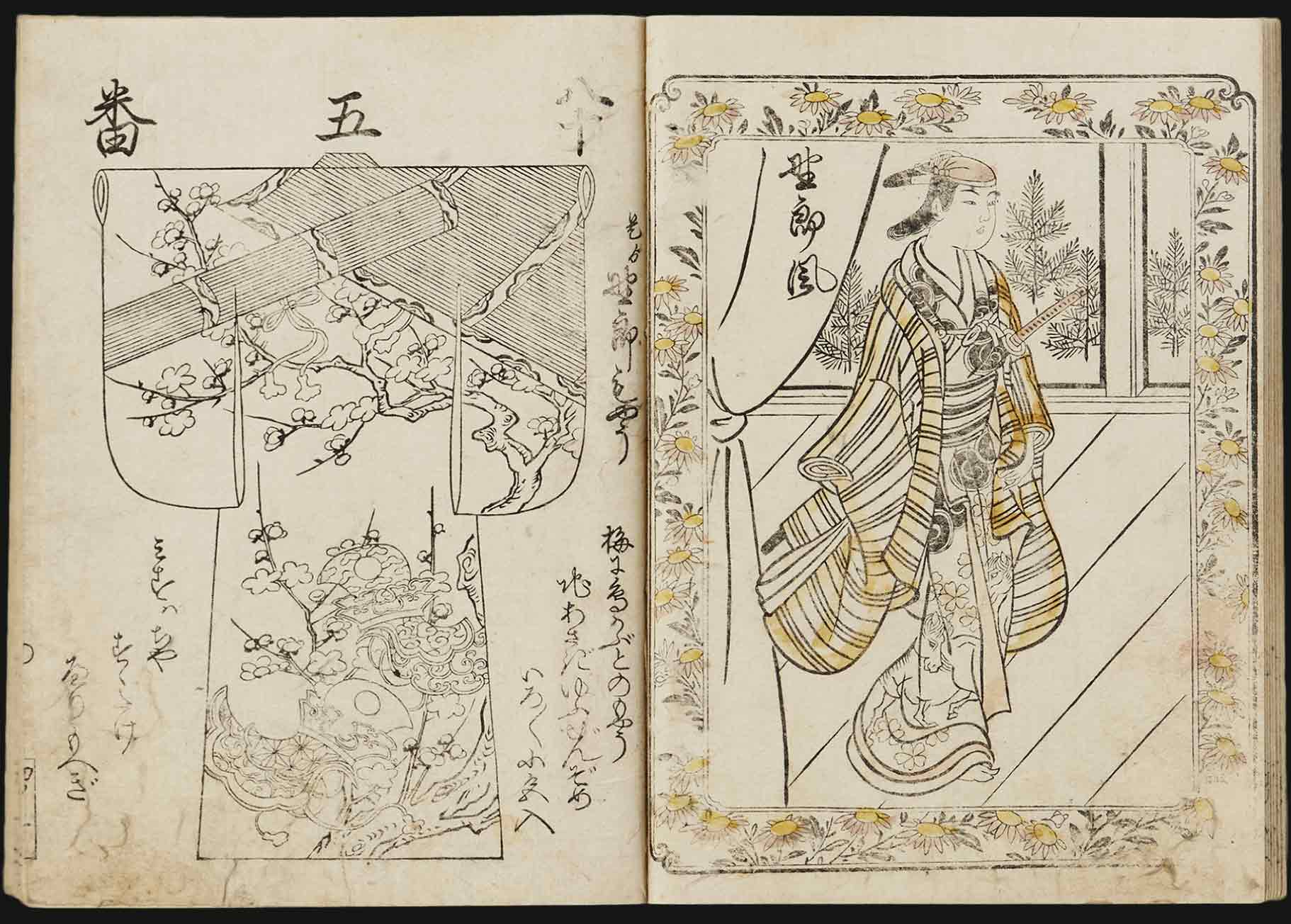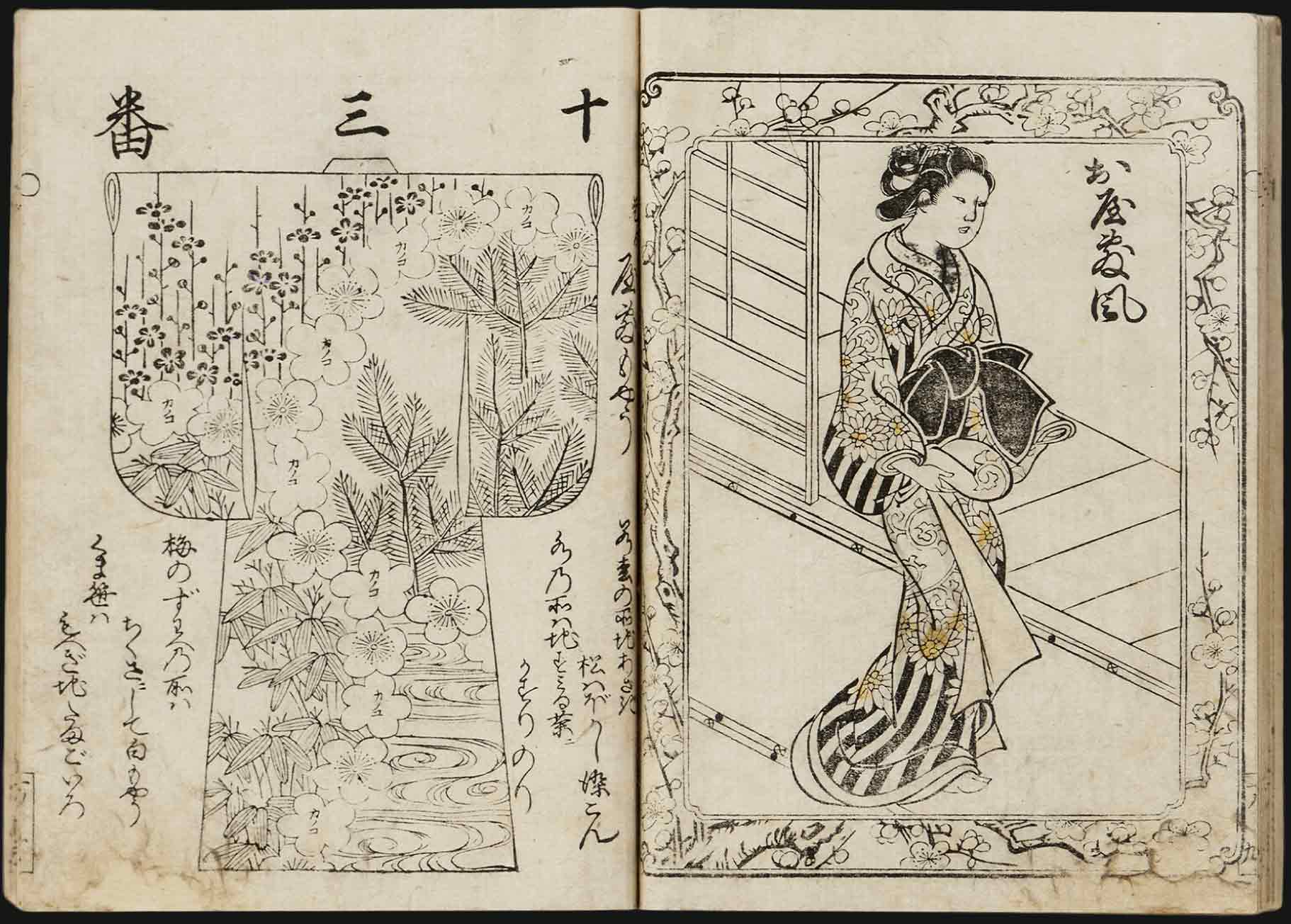Designing a Kimono
thehe early style of kosode, or small-sleeved kimono, from the Kanbun era (1661-73) of the Edo period was noted for its dramatic, asymmetrical designs that swept diagonally across the garment from the upper back shoulder to the hem. As seen in its blue overturned flask and in the black patterning of the flowing contents, this kosode is an early example of the kanoko shibori tie-dyeing technique. How were striking designs such as this chosen for kimono?
About this kimono
Explore the pages of this 18th century design book
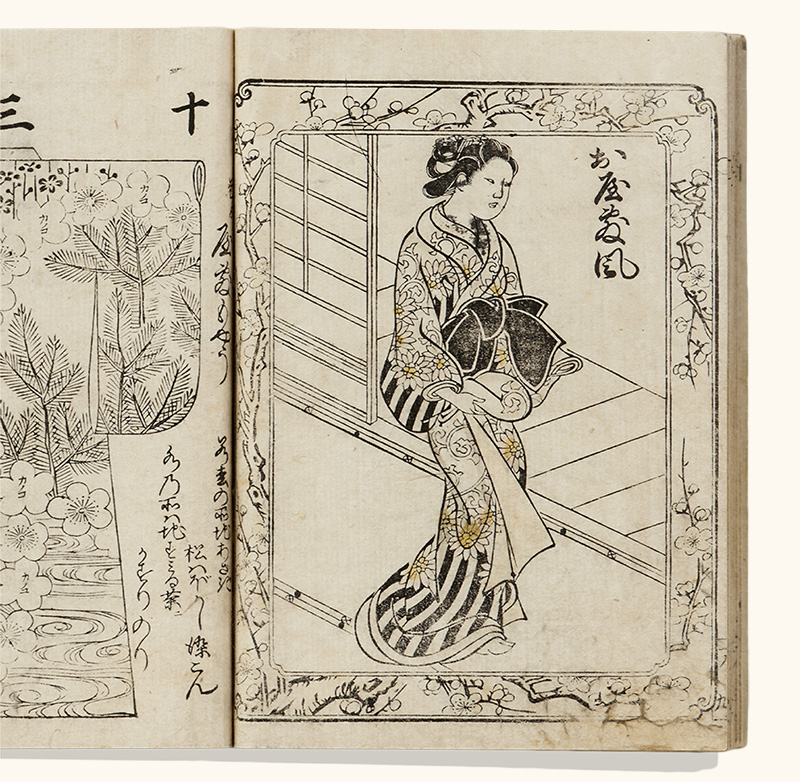
Pattern and Fashion Books
Customers, as well as the makers and sellers of kimono, would turn to pattern books, known as kosode hinagatabon, for assistance. These contained illustrations of designs and patterns, as well as use of colors. During the Edo period (1603-1868), men lived in the “public” sphere, and were required to wear clothing in compliance with their social status. Women lived in the “private” sphere, and were comparatively free to select clothing styles as long as they did not run counter to their social status. They were able to choose details such as the fabric, design, and decorative techniques. They would consult these pattern books for inspiration, and then place orders for these one-of-a-kind garments.
These books also operated as fashion magazines, and urban townswomen collected them as keepsakes and browsed them as pastimes. They were also bought and collected by clerks, and shown to customers who came to request commissioned pieces. Kosode hinagatabon were sold in urban bookstores—not unlike fashion magazines today.
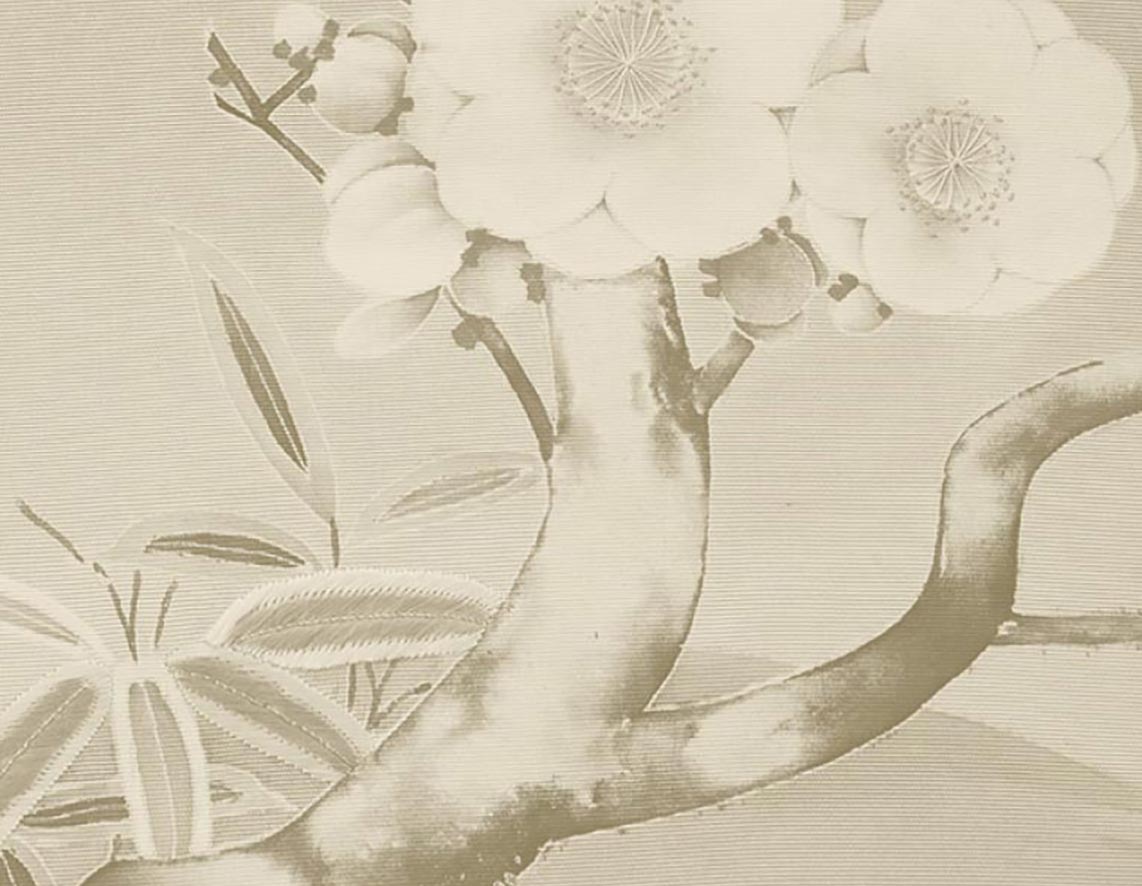
Feeling Inspired?
Download our kimono template to design your own! Tag us @worcesterart and use the hashtag #mywamkimono for a chance to be featured!
